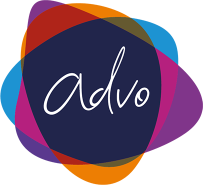Government statistics highlight that there are around 14 million people with disabilities living in the UK, with around 4.1 million in work. However, disabled people are more than twice as likely to be unemployed as non-disabled. These statistics are quite high – and so are the chances that you employ someone who has a disability that you are unaware of. 96% of illnesses are invisible, and people are often not forthcoming with their disabilities, likely due to a perceived stigma or lack of acceptance and understanding. As an employer, it’s your responsibility to encourage people to ask you for help, so you can support hidden disabilities in your workplace.
What is an invisible disability?
It is one that is not easily visible and immediately apparent. From depression to arthritis or diabetes, most chronic illnesses aren’t visible to the untrained eye. As well as not recognising the disability, people also struggle to understand it if they can’t see physical evidence of it. This lack of understanding leads to many ‘keeping quiet’ about their disability. Some disabilities can bring with them a great deal of stress and pain to the working life of a suffering employee; however some conditions mean sufferers have different perspectives and skill sets. These perspectives and skill sets could add significant value to the business, but are often under-utilised because of fear of disclosure.
The Equality Act (2010)
The Equality Act (2010) is designed to protect employees against discrimination. When issues are identified, it is important to ensure that the correct level of support is given. It is recommended that line managers are educated and provided with training on ‘invisible illnesses’. By law, an employee with a disability is entitled to tell you what adjustments they need, and you are required to consider and accommodate reasonable requests and make adjustments where possible. The recent pandemic has helped this situation with more home working, which has enabled employees to modify work patterns or make adjustments themselves, with no or very limited impact on their work.
Making adjustments can be difficult if the employee is not forthcoming with their disability, which presents a problem for employers. It is recommended that employers make it clear that if anybody requires adjustments to their working method that they would be happy to consider any requests. This should be included in inductions for new starters, and also by displaying resources either on-line or around the office environment to make it known. Access to funding for some requests for equipment is available through Access to Work but initially, please do contact advo and we can help you with advice about supporting employees, reasonable adjustments and what you need to do.
Disability Confident Scheme
The Government campaign “Disability Confident Scheme” has more than 18,000 organisations signed up to it to support employers and employees. Some employers who actively participate in supporting people with disabilities have signed up to the ‘mindful employer’ charter which they can advertise and promote on their websites. This is great recognition and encourages a wider talent pool for recruitment, improves Corporate Social Responsibility by championing diversity and helps employees understand a better diverse range of customers they may interact with.
The “not every disability is visible” sign is a great way to start to show your support for hidden disabilities and encourage disclosure. Many organisations and venues now display signs which acknowledge disabilities come in all shapes and sizes, to educate and ensure all employees are aware and avoid the damaging implications of making an insulting joke or comment because of a lack of understanding.
If you would like advice or would like to implement a training programme for your team, please do contact advo as we would be happy to support you with advice and can provide training.


